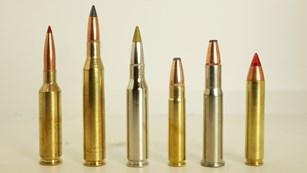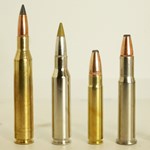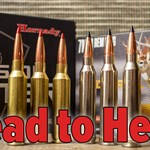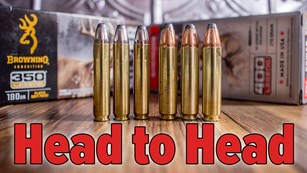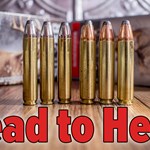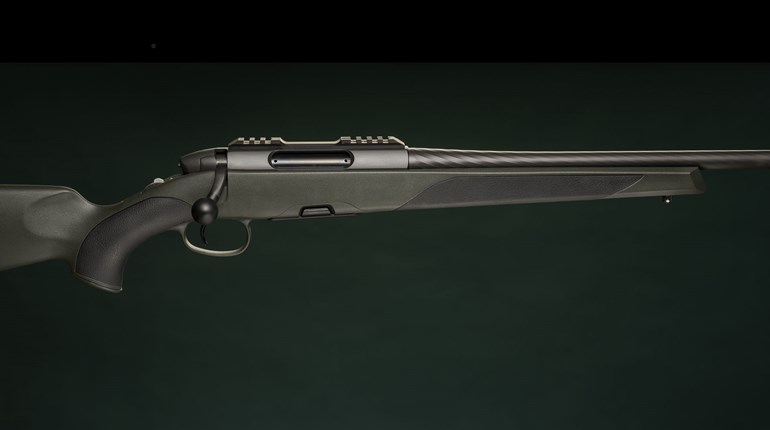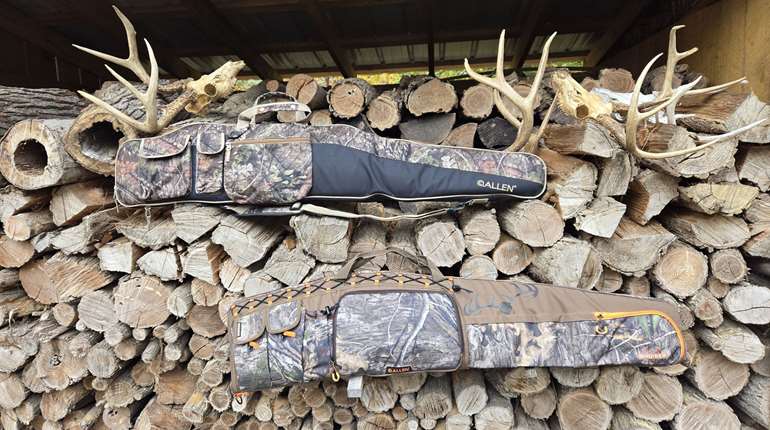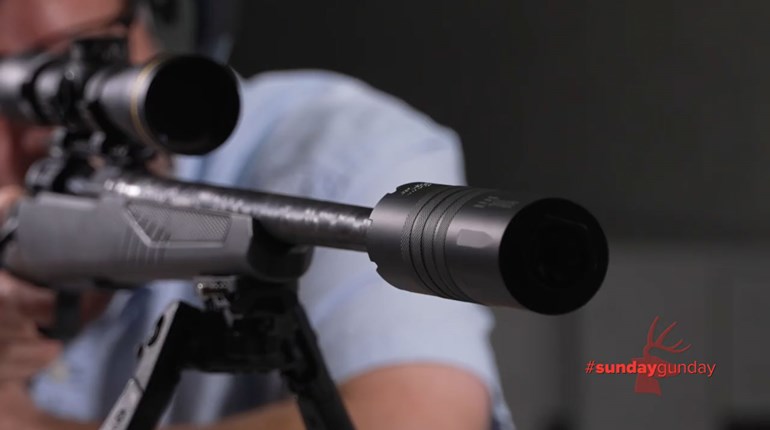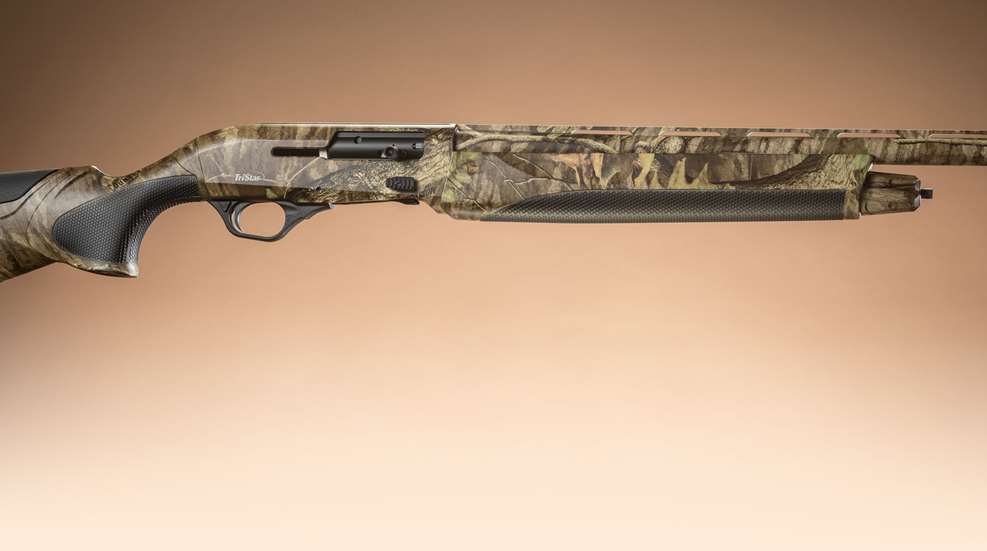
There are few more utilitarian tools than a good, affordable shotgun. TriStar Arms is one of the leaders in producing firearms that fit into this category, and for 2025 the company released an update to its acclaimed Raptor semi-auto. Appropriately named the Raptor II, this gas-operated repeater features enhanced furniture, modern finishes and a dollar-to-gun ratio that is off the charts.
The Raptor II’s gas system is built in a conventional manner, which is partly how TriStar is able to offer the gun with an MSRP of $579.99 or less, depending on the furniture. When a shot is fired, the burning gases create a pressurized chamber between the hull and the wad as it travels down the bore. When the shot passes a pair of gas ports drilled into the 6 o’clock position, it directs a portion of this pressure to an internal piston, which drives the action rearward. During this movement, the fired shell is ejected and a fresh one is fed from the internal five-round tubular magazine. Because this operation is independent of recoil, many scattergunners consider this to be more reliable than inertia-driven systems when using lighter loads or shooting from less-than-ideal positions.

TriStar offers the Raptor II in 12- or 20-gauge with black synthetic, walnut or Mossy Oak Country Roots furniture. The standard barrel length is 28 inches, with a 26-inch compact model available in 20-gauge. Naturally, we selected the camouflaged option for our testing, and our sample arrived chambered in 12-gauge. This finish is applied through a hydro-dipping process with much attention paid toward hiding the seams, which I noted during initial assembly. Using the oversized bolt knob to rack the action to the rear, I noticed a sticking point toward the end of its stroke, something I would keep an eye on for the duration of this review. The Raptor II is furnished with a widened release paddle, which sends the bolt home, chambering a round in the process. Admittedly, this did need a bit of influence to operate early on as well.
Working with some dummy rounds, I revealed a handy feature, which is the ability to cycle out what’s in the chamber and swap in something else, free of the magazine trying to feed its next shell. Essentially, rounds are only released from the magazine when the trigger is pulled or the release on the left side is depressed. This is also important to understand when unloading, as merely racking the action will not empty the magazine tube.
The stickiness that I felt during dry handling is well documented by the manufacturer with an orange label on the box that informs the buyer that a break-in period is likely, and that this is best accomplished through hard-charging ammunition. The 3-inch chamber puts most shotgun fodder on the table, save the longest magnums, so I had plenty of options. To that end, I selected Federal’s Heavyweight TSS loads to get the party started. These shells contain a 13/4-ounce payload of No. 9 Tungsten Super Shot with a density of 18 g/cc. This is heavier than conventional lead, and even heavier than standard tungsten. With that said, they also satisfy any non-toxic ammunition regulations that may be in place where you hunt. For lighter fare, I went with Remington’s No. 71/2 Game Load, which is good medicine for doves and doubles as an excellent target round. My intention was to break a few clays with some after I had patterned the shotgun and worked out any initial kinks.

Without surprise, the Raptor II cycled the TSS loads without a hiccup, even right out of the gate. When pressed firmly against my shoulder, the recoil was stout enough to bounce it right past that rearward sticking point. The point of impact was nearly dead center at 40 yards, although a picky shotgunner might say the pattern centered about 2 inches left. However, if you’re claiming that as the reason you’re missing birds, you’d be better served by taking an NRA shotgun course than drawing circles around patterns. With the modified choke installed, I was able to put more than 400 pellets inside a 20-inch circle, which is going to down most toms in a single shot. The dove loads did exhibit the same issue that came up during dryfire, which, upon closer inspection, was unique. The gas system worked flawlessly, as it drove the action completely to the rear with each shot, even to lock open the gun when it was empty. It was just that darn rubbing point that was impeding the return to battery. Pulling the gun apart, I was able to determine this point to be inside the fore-end, toward the extreme rear; so, I lubricated the area and reassembled. That did the trick, as I immediately ran six consecutive dove loads without any hangup.
Stepping over to the clay field, I readied a Caldwell Claymore Solo trap and fired off a string of straight-away targets. During this portion of the evaluation, I was able to gather a feel for how the shotgun pointed, as well as how it shouldered. I especially enjoyed the green fiber-optic front bead situated on the ventilated rib—this put it at the right height for natural acquisition. The soft-shooting nature of gas-operated shotguns paired with the rubber buttpad and comb cover makes the Raptor II a terrific choice for a long day of sporting clays or informal target shooting. The textured grip and fore-end were aggressive enough to promote a secure purchase without being so coarse they irritate your hands in the long haul. Overall, it’s an extraordinarily cozy gun to work with.
Wrapping things up, I was impressed with the changes that TriStar made to its hit Raptor shotgun and believe the Raptor II will be equally successful. I found it to be a perfect choice for somebody starting out or looking to add a second shotgun to his cabinet as a backup or to share with a guest. The break-in period might be the gun’s only demerit, but kudos to TriStar for being upfront about it the moment you open the box. Those looking to work through this period faster and without using ammunition are invited to spend some time at home with it cycling the action, as that goes a long way to wear-in springs, mate parts and work away any rub points. I will warn you, though, after a few minutes of this, you’re going to want to go out and shoot it.

Tristar Raptor II
- tristararms.com
- Type: gas-operated, semi-auto shotgun
- Gauge/Chamber: 12/3"
- Capacity: 5+1
- Barrel: 28"; chrome lined; vent rib; interchangeable choke tubes
- Trigger: 5lb.-15-oz. pull weight
- Sights: green fiber-optic front sight; 3/8 dovetail groove for scope mount
- Safety: cross-bolt
- Stock: synthetic; Mossy Oak Country Roots; 141/4" LOP; 21/2" drop at heel; 11/2" drop at comb
- Metal Finish: Mossy Oak Country Roots
- Overall Length: 481/4"
- Weight: 7 lbs., 1.6 ozs.
- Accessories: Benelli Mobil style choke tubes (Imp. Cyl., Mod., Full), choke wrench, magazine plug
- MSRP: $579.99




